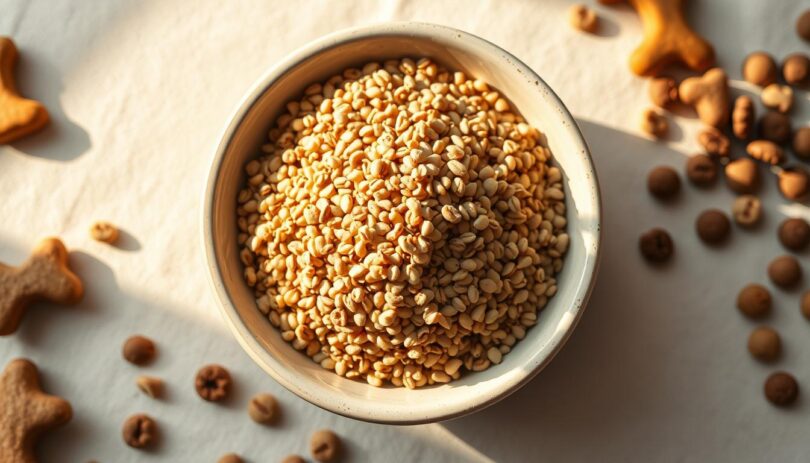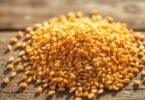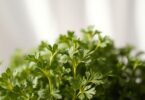Every pet owner knows that moment of hesitation—holding a new food item and wondering, “Is this safe for my furry friend?” With quinoa’s rise as a superfood in human meals, many wonder if this nutrient-packed grain belongs in their pup’s bowl. The answer isn’t a simple yes or no, but a thoughtful balance of science and care.
Quinoa has quietly become a staple in kitchens nationwide, praised for its protein, fiber, and vitamins. Pet parents now ask whether this trendy ingredient could benefit their four-legged companions. Research shows it can offer valuable nutrients when prepared properly, but portion control and preparation matter deeply.
While this ancient grain provides essential amino acids and minerals, overfeeding risks stomach upset. Small breeds might need just a spoonful mixed into meals, while larger dogs could handle slightly more. Always skip seasonings like garlic or onions—stick to plain, cooked quinoa. For a deeper dive into safe practices, explore this comprehensive guide tailored to canine diets.
This article breaks down everything you need: serving sizes, cooking methods, and expert-backed tips. You’ll learn how to introduce quinoa safely and recognize signs of intolerance. Let’s ensure your pet enjoys this superfood’s perks without compromising their health.
Understanding Quinoa: What It Is and Its Nutritional Value
Nutritional science reveals that quinoa isn’t a typical grain but a gluten-free seed packed with powerhouse benefits. Often mistaken for cereal, this ancient crop stands out for its rare ability to deliver all nine essential amino acids. Its versatility and nutrient density make it a rising star in pet nutrition.
Nutrient Profile and Health Benefits
Rich in high-quality protein and dietary fiber, quinoa supports digestion and energy levels. A single serving contains magnesium for bone health, iron for oxygen transport, and phosphorus for cell repair. Antioxidants like quercetin further boost immune function, making it more than just filler in meals.
The Role of Amino Acids, Vitamins, and Minerals
Complete proteins in quinoa aid muscle development, especially important for active pets. Lysine promotes tissue repair, while B vitamins help convert food into fuel. Minerals like zinc and manganese protect skin health and metabolic processes, rounding out its role in balanced diets.
Compared to traditional grains, quinoa’s low glycemic index stabilizes blood sugar. This makes it a smarter choice for pets needing sustained energy. Always consult a vet to tailor portions to your companion’s unique needs.
can dogs have quinoa: A Closer Look at Safety and Dietary Benefits
Introducing new ingredients to a pet’s bowl requires balancing nutritional value with safety. Quinoa stands out as a versatile addition to meals, but understanding its role in animal diets demands careful evaluation.
Evaluating Quinoa as a Complete Protein Source
This pseudo-grain delivers all nine essential amino acids, making it rare among plant-based foods. These building blocks support muscle development and cellular repair, particularly beneficial for active or growing pets. Lysine aids tissue regeneration, while methionine promotes healthy skin and coat.
Fiber content in quinoa helps regulate digestion, reducing constipation risks. Its low glycemic index also prevents energy spikes, ideal for pups with weight concerns. Pairing it with safe legumes creates balanced meals rich in protein and nutrients.
Recommended Servings Based on Dog Size
Portion sizes vary significantly by weight class:
- Extra-small breeds (under 10 lbs): 1-2 teaspoons cooked
- Medium dogs (30-60 lbs): 1-2 tablespoons
- Extra-large pets (90+ lbs): ¼ cup max
Start with tiny amounts mixed into regular food. Watch for loose stools or itching, which may indicate sensitivity. Always consult a veterinarian before making dietary changes, especially for pets with existing health conditions.
When prepared plainly and served in moderation, quinoa offers a nutrient-dense boost to meals. Its combination of protein, vitamins, and minerals makes it a smart supplement rather than a staple in your companion’s food routine.
Best Practices for Preparing Quinoa for Your Dog
Preparing meals for pets requires precision—every ingredient choice impacts their well-being. Proper techniques preserve nutrients while minimizing risks. Let’s explore methods to transform this ancient seed into a safe, digestible addition to meals.
Cooking Techniques and Serving Guidelines
Start by rinsing raw quinoa under cold water for two minutes. This removes saponin, a bitter coating that can irritate sensitive stomachs. Cook it in plain water until fluffy—about 15 minutes—then cool to room temperature.
Mix a small portion with regular foods like kibble or lean proteins. For pets under 20 pounds, begin with half a teaspoon. Larger breeds may tolerate up to two tablespoons. Introduce it gradually over three days to monitor digestion.
How to Avoid Harmful Additives and Spices
Never add salt, garlic, onions, or butter. These common flavor enhancers trigger issues ranging from dehydration to toxicity. Plain preparation ensures antioxidants remain intact without introducing sensitivities.
Store leftovers in airtight containers for up to three days. Freeze portions in ice cube trays for easy, weight-conscious servings. Pairing it with fiber-rich vegetables like pumpkin supports healthy digestion while balancing nutrient intake.
Following these steps transforms quinoa into a beneficial source of vitamins and minerals. Thoughtful preparation maximizes its role as a supplemental food rather than a dietary staple.
Alternative Grains and Foods to Complement Your Dog’s Diet
Exploring dietary variety ensures pets receive balanced nutrition while minimizing allergy risks. Traditional kibble formulations often rely on wheat or corn, which can trigger sensitivities in some animals. Rotating ingredients helps maintain digestive health and prevents boredom with meals.
Comparing Nutritional Profiles and Digestibility
Wheat and soy provide protein but lack quinoa’s complete amino acid profile. Corn offers energy yet may spike blood sugar levels. For pets with gluten intolerance, this ancient seed’s superfood qualities shine—it’s easily digestible and rich in minerals.
Lean proteins like chicken or turkey pair well with cooked quinoa for muscle support. Fiber-rich pumpkin or green beans aid digestion. Blueberries add antioxidants without excess sugar. Always balance these additions with your furry friend’s regular meals.
Portion control remains critical. A small breed might need just a teaspoon mixed into kibble, while larger companions could handle a tablespoon. Consult your vet to adjust servings based on activity level and size.
While quinoa’s superfood status makes it appealing, diversity prevents nutrient gaps. Alternate with brown rice or oats for varied fiber sources. This approach supports long-term health without over-reliance on one ingredient.
Final Thoughts on Incorporating Quinoa into Your Dog's Diet
Deciding what to feed your furry companion involves more than just following trends. When prepared plainly and portioned thoughtfully, quinoa can enhance meals with its complete amino acids profile and fiber-rich structure. These nutrients support digestion, muscle health, and stable blood sugar levels—key for pets needing consistent energy.
Always prioritize simplicity: rinse thoroughly, cook without additives, and introduce gradually. Pairing small amounts with lean proteins or vegetables creates balanced meals. For tailored advice, consult your veterinarian to determine ideal serving sizes based on breed size and activity level.
While the benefits of quinoa are clear, it shouldn’t dominate your pet’s plate. Rotate it with other vet-approved grains like oats or brown rice to maintain dietary diversity. This approach ensures your companion enjoys varied nutrients while minimizing allergy risks.
With proper guidance, this ancient seed becomes a strategic addition to dog food routines. Its ability to promote healthy weight management and nutrient absorption makes it a smart choice for dedicated pet parents. Remember—moderation and preparation pave the way for safe, beneficial outcomes.
FAQ
Is quinoa safe for pets to consume?
Yes, when properly cooked and served plain, quinoa is safe for most pets. It provides essential nutrients like protein, fiber, and minerals. Always introduce it gradually to monitor for digestive reactions.
What makes quinoa a nutritious addition to a pet’s diet?
Quinoa contains amino acids, antioxidants, and vitamins like B and E. Its high fiber content supports digestion, while minerals like magnesium and iron contribute to overall health.
How does quinoa compare to rice or oats for pets?
Unlike refined grains, quinoa offers a complete protein profile and lower glycemic index. It’s ideal for pets with sensitivities to wheat or corn, though portion control remains key.











Leave a Comment